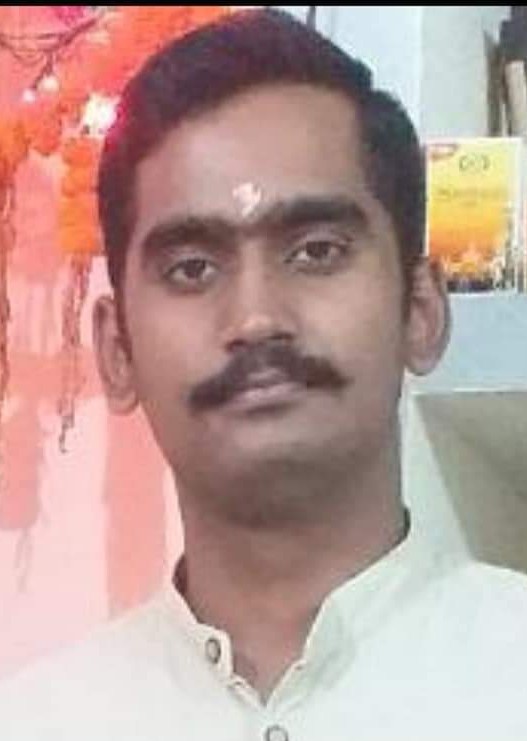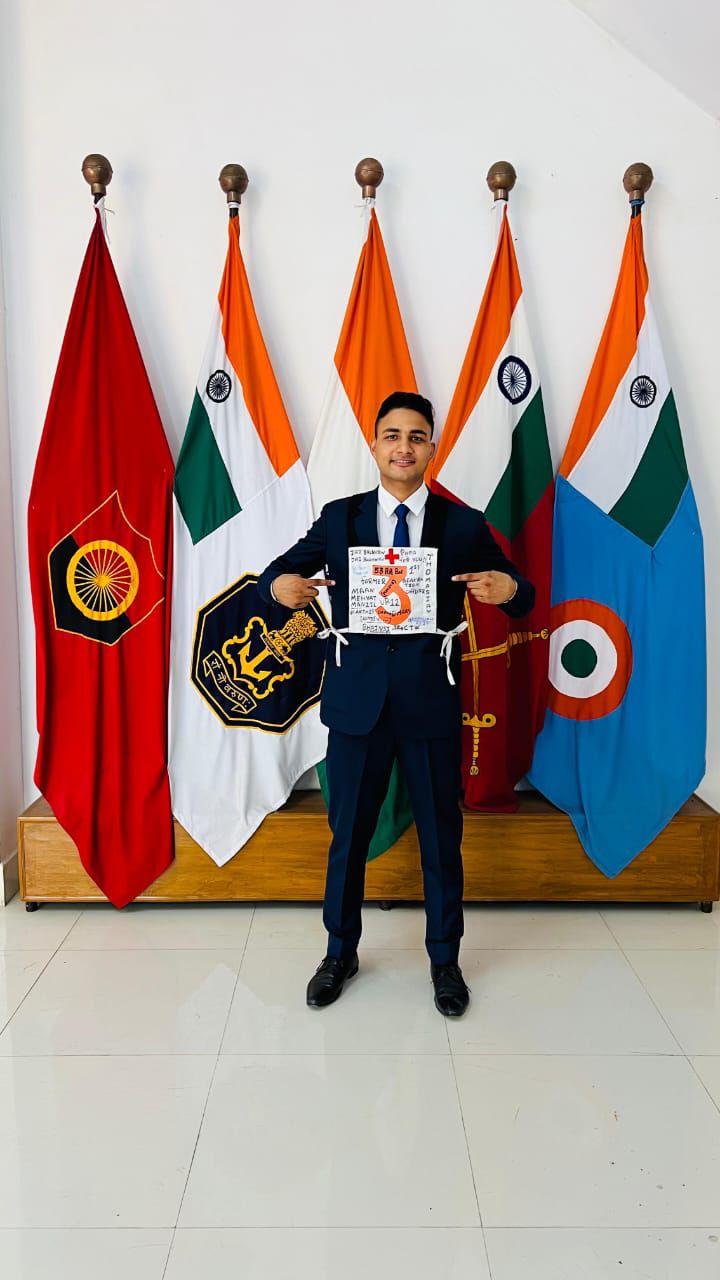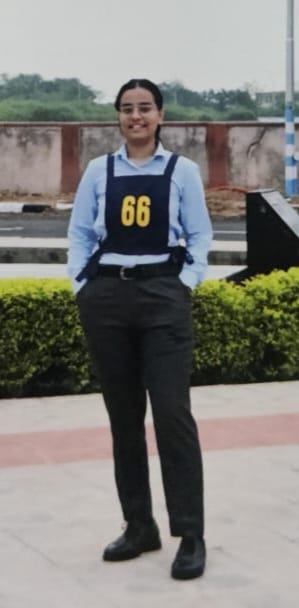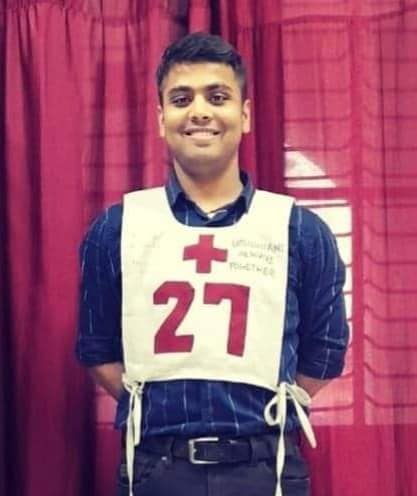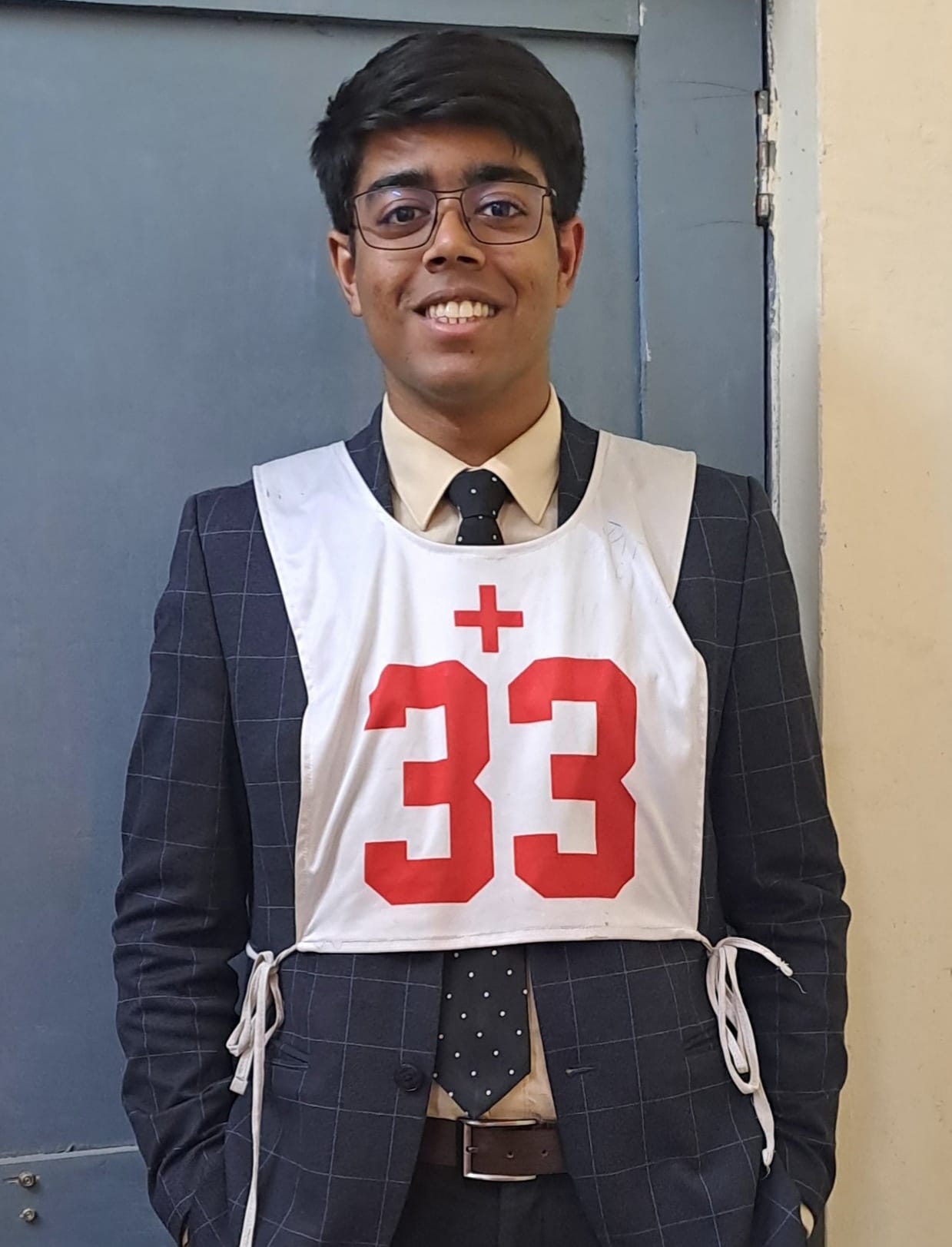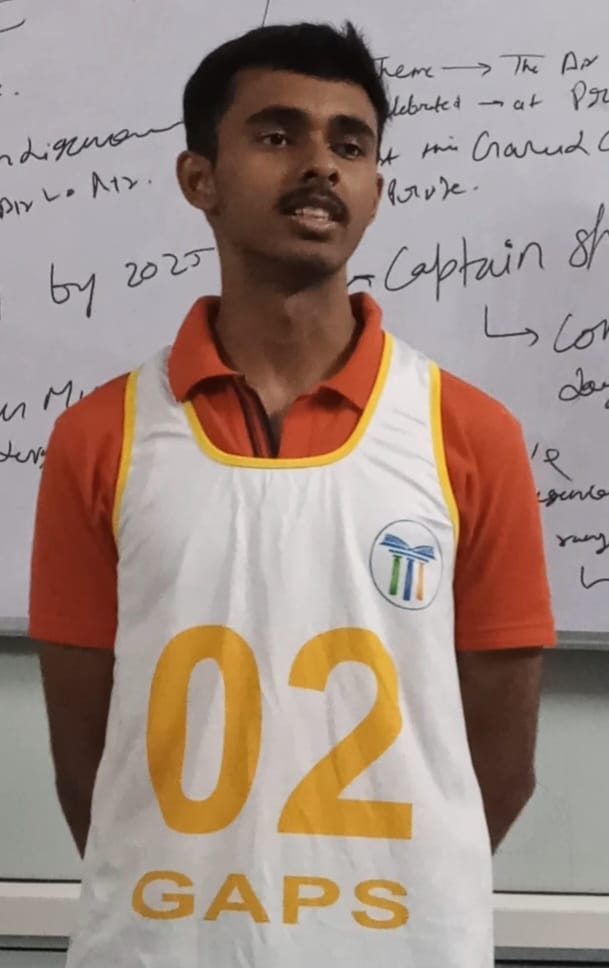The previous article ended with the discussion on the Vijaynagar Empire which was a part of the Medieval age. This article will continue focussing on the Medieval Military history of India during the Mughal Era.
There was a significant evolution of Mughal Weapons seen during the ruling periods of Babur, Akbar, Aurangzeb and Tipu Sultan. Through centuries, the military of the Mughal Empire used a variety of weapons including swords, bows and arrows, horses, camels, elephants, some of the world's largest cannons, muskets and flintlock blunderbusses. The frequently used arms by the cavalrymen for melee attacks were short arms that can be sorted into five different types, mainly swords and shields, maces, battle-axes, spears and daggers. For attacks that were long-ranged, the bow and arrow, the matchlock and pistols were used. Rockets known as Topkanah were used wherever necessary. Due to the large range of weapons used during combat, it was nearly impossible for a single man to carry all the weapons but together as an army, one could make use of all the weapons at different times. Heavily embroidered Sword Belts were used to carry a sword while riding on horseback.
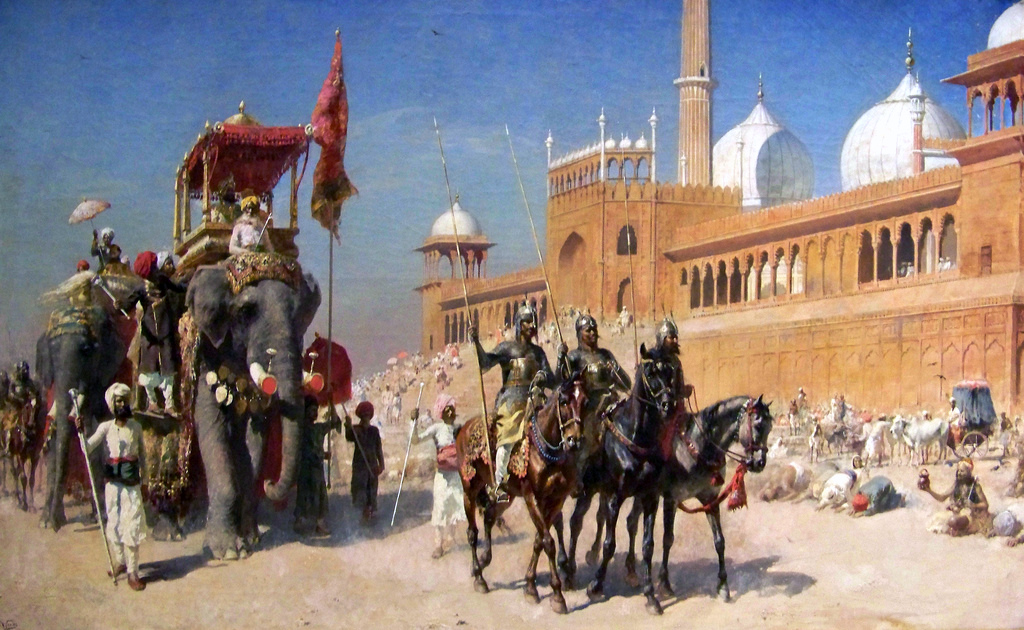
Image Source : Google (Army of the Mughal Empire)
There were different types of blades used in a sword. Amongst all, Talwar was the most common blade of the Mughal infantry. A curved weapon known as Shamsher was used as a cutting weapon due to its shape and small grip. Adopted from the Dakhin, Dhup - a straight sword made of steel, had a broad blade four feet long and a cross hilt. It was considered an emblem of sovereignty and high dignity and was displayed on state occasions carried in a velvet wrapping by a man who held it upright before his master. A sword named Khanda was a straight sword similar to that of dhup. Other swords included Sirohi, Pata and Gupti which were also used along with Shamsher and Dhup.
As a part of a swordsman’s tools, a shield was held with the left arm or slung over the shoulder when not in use. Made of steel, they were generally 17 to 24 inches in diameter. One type of shield was called Chirwa and Tilwah that were carried by Shamsherbaz who basically held the sword Shamsher. Another was a Fencing Shield made of small circular shields of cane or bamboo known as dhaal, shaped like a lentil.
The mace, also known as Gurj was a short-handled club with three large round balls at the end. It was carried by anyone who was a part of the Mughal army holding a considerable rank. Another variety of mace called the Shashbur, or "lung-tearer", was a single round-shaped head strikingly similar to weapons like Dhara, Gargaj and Kundlili phansi. Amongst all others, Kolhapur’s originating weapon Dhara was 2 feet long and had a six-bladed head and octagonal steel shaft The Kundli phansi was 1 inch (25 mm) long and had a head of open scrollwork. A weapon named gujbag was the common elephant goad or ankus.
In dictionary terms, an axe is a tool used for chopping wood, typically of iron with a steel edge and wooden handle. But in ancient times there were different types of axes available that were not just different in shapes or sizes but also used for varied purposes. An axe called the Zaghnol had a pointy head with two cutting edges in the shape of a crow's beak which was also what the name represented. Zaghnol was a double-headed axe with a broad blade on one side of the handle and a pointed one on the other. An axe with a longer handle, called tarangalah , was also one of the most common forms of axes. Another axe carried by the attendants in the audience hall to be put on display was called Basolah and it looked like a chisel while being highly ornamented.
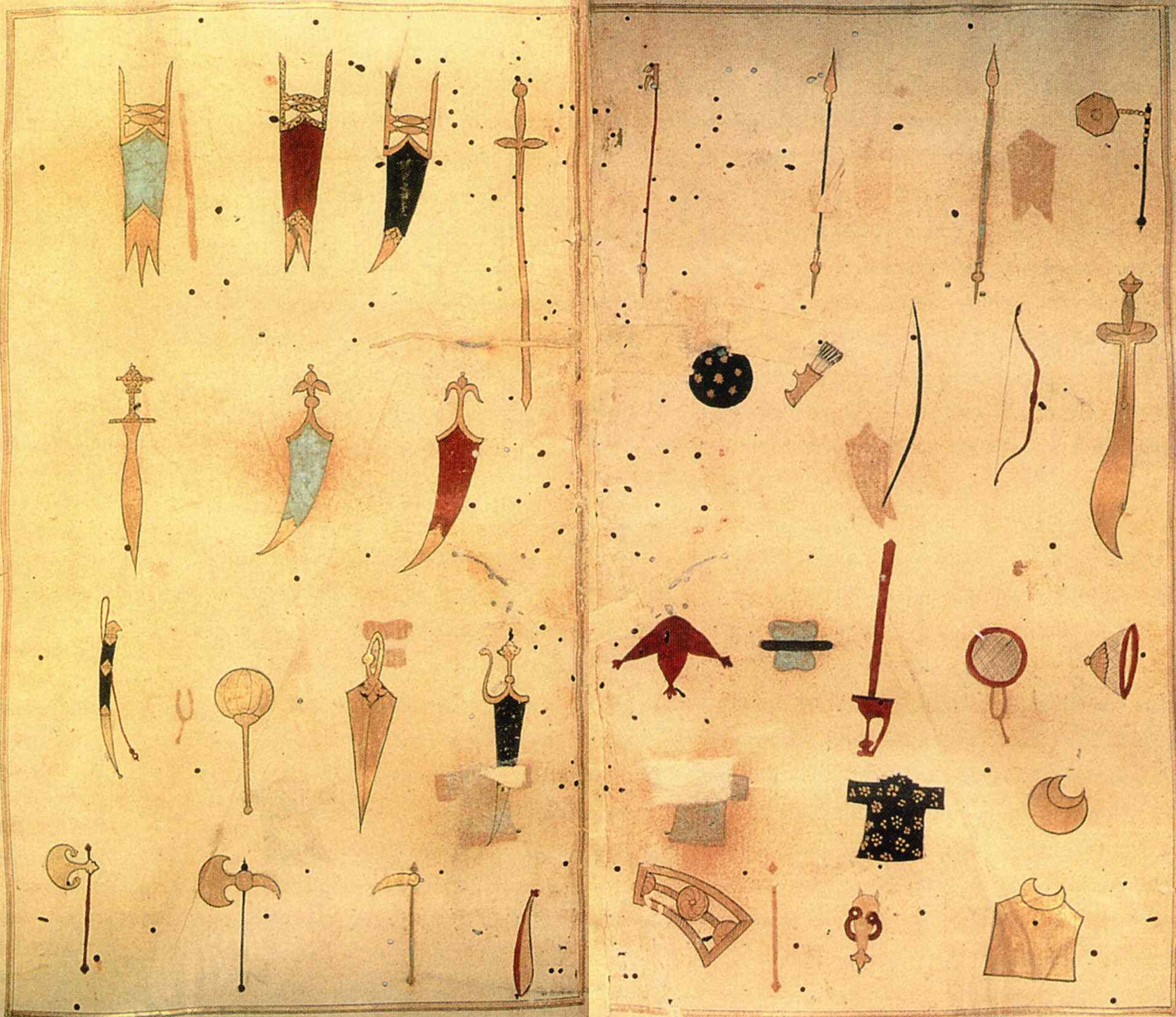
Image Source : Wikipedia (Diverse Weapons of Mughal Era)
Spears were also used at the time of the Mughal era broadly classified as Nezah, Barchhah, Sang, Sainthi and Sarah etc. Lance combined with different types of spears were generally used by the Cavalry. There is evidence that lance such as Barchhah was also popular during the Maratha rule. Katari and jamadhar were common types of knives and daggers at that time. The most interesting fact about these weapons was that they could define a person’s ethnicity. For example, Daggers and knives like Khanjar were used mainly used by Turks, occasionally by both Persians and Indians. Bichuwa and Khapwah were used by the Marathas. Karud , introduced by Afghans, is a Combat knife still used by Panjabis and Sailabah-i-Qalmaqi used by the men from Kashghar.
Missile weapons comprise of four types of weapons namely, Bows and arrows, matchlocks, pistols and cannons. Bows and arrows were held by the Cavalry. Bows were widely used by the rebels during the Revolt of 1857. The matchlock, a cumbrous and no doubt ineffective weapon was left mainly to the infantry while pistols seem to have been rare. Hyder Ali and Tipu Sultan are considered to have created rockets. However, it is very possible that the idea originated in Mughal era India. Mughal emperor Akbar introduced many improvements in the manufacture of the matchlock but wasn’t used so much up until the 18th century. The pistols were called tamanchah.
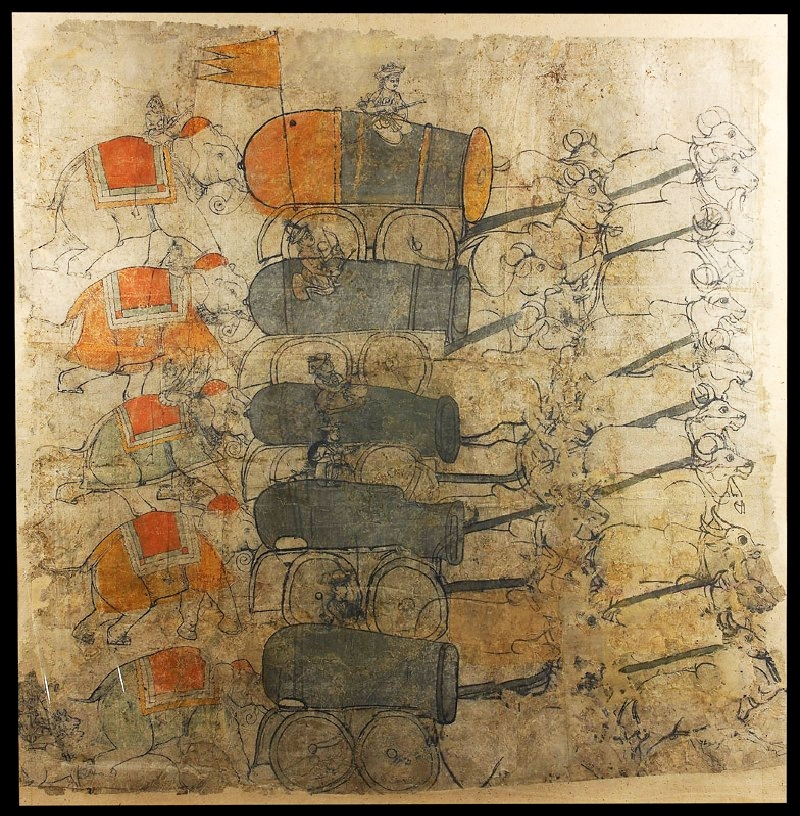
Image Source : Wikipedia (War Elephants in a Combat)
Mughal artillery consisted of a broad array of gunpowder weapons, from rockets and mobile guns to an enormous cannon once described as the "largest piece of ordnance in the world." This array of weapons was divided into heavy and light artillery. Historians regarded the mobile artillery as one of the central military powers of the Mughal Empire and distinguished its troops from most of their enemies. It was considered a status symbol for the emperor. They mainly used it to counter hostile war elephants, which made frequent appearances in warfare on the Indian subcontinent.
